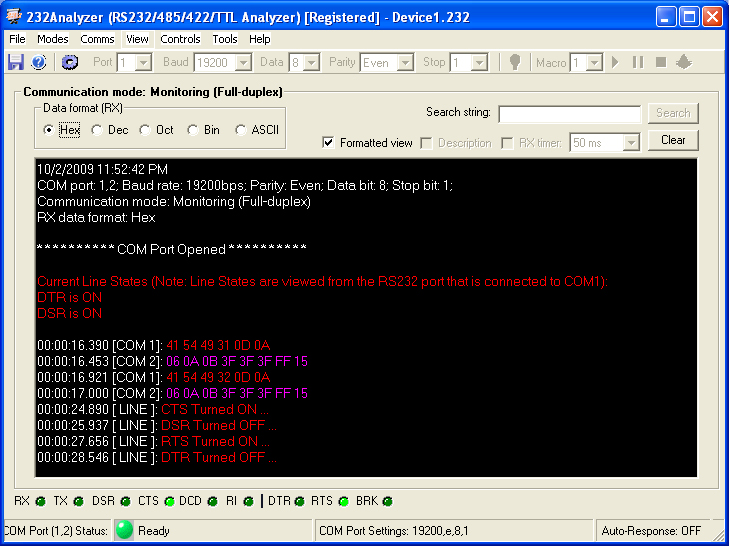

1 – Serial Communication – Data Flow through Single PathĪt small distances, serial buses are becoming more common and popular because the disadvantages of parallel buses prevails their advantage of simplicity. As the cost of establishing a parallel communication is very high and its configuration is lengthy and complex, the Serial communication is preferred for all major communication/computer networks.įig. Hence, for a two-way digital communication, we will only need two wires between the transmitter and receiver. Serial communication takes place by using only a single wire or line. This is directly opposite to the function of parallel communication, where several bits are sent together on a bus consisting of many wired lanes in parallel. How does an arrow shoots from the bow? One at a time, isn’t it? Same is the case with Serial Communication. Serial communication can be defined as the method of sending one bit of data at one point of time in succession through a bus. This post will discuss Serial Communication, its protocols, comparison of RS Standards and advantages of Serial Communication over Parallel Communication. It became popular owing to its low cost installation and less space requirements. These bytes are the characters of the phrase “Master value:”.Serial Communication is the simplest communication of all between a sender and receiver. First, in the while loop, all bytes except for the last one are received. The “receiveEvent()” function: Using this function, the data sent from the master is received.We will also explain the inside of each functions in the following. The functions “onRequest” and “onReceive” are used to request sending data and receiving data, respectively.

#Serial communication protocol code
The following points are worth mentioning regarding the code above: We want to send the value of the potentiometer on the master side to the slave and receive a byte of the potentiometer data by the slave, display it on the Serial Monitor and control the brightness of the LED with it. onRequest(): This is defined as a function by the slave and is called when data is requested by the master.onReceive(): This is defined as a function by the slave and is called when data is received from the master.setClock(): This is used by the master to set the clock frequency.read(): The function for reading a byte of data from the I2C bus.available(): Both the master and the slave use this function to calculate the number of bytes received (by the “read()” function).




 0 kommentar(er)
0 kommentar(er)
